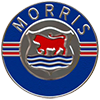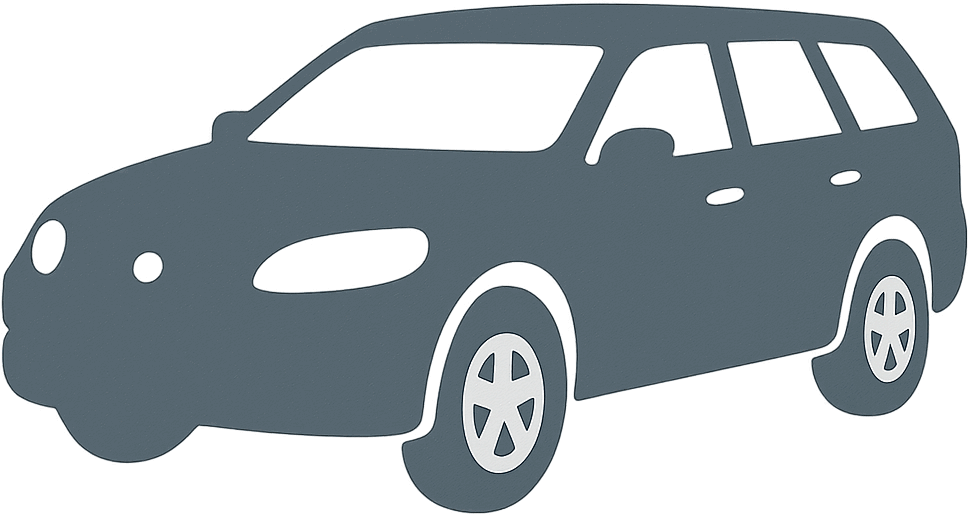 1978 Morris Marina III Station Wagon Dimensions, Size & Specs
1978 Morris Marina III Station Wagon Dimensions, Size & Specs
The Morris Marina III Station Wagon, produced between 1978 and 1980, represents the final iteration of the popular Marina estate line from the British manufacturer Morris. Designed as a practical and versatile family vehicle, this station wagon combined functionality with a straightforward design typical of late 1970s British automotive engineering. Although specific dimensional figures for the Marina III Station Wagon are not widely documented, this generation maintained the compact estate characteristics suitable for everyday use and moderate cargo capacity. The vehicle typically offers a practical length and height accommodating passengers and luggage comfortably while providing ease of maneuverability in urban and suburban environments. The station wagon body style ensures increased rear storage space compared to the sedan variants, catering to families and users requiring flexible load configurations. As a quintessential example of Morris's approach during the era, the Marina III Station Wagon balanced simplicity, reliability, and utility, making it a noteworthy choice among British station wagons of the late 1970s. The car's design and configuration highlight its role as a durable and functional vehicle, ideal for users seeking dependable transportation with added cargo versatility.
Discover the standout features that make the 1978 Morris Marina III Station Wagon a leader in its class
Have a question? Please check our knowledgebase first.
The Morris Marina III Station Wagon, produced from 1978 to 1980, features a length of approximately 4,455 mm (175.4 inches), a width of about 1,680 mm (66.1 inches), and a height close to 1,425 mm (56.1 inches). These dimensions make it a relatively compact station wagon for its time, offering a good balance between interior space and manageability on the road. Its size was particularly suitable for family use, with sufficient cargo capacity while maintaining a manageable footprint for urban and suburban driving.
The curb weight of the Morris Marina III Station Wagon is estimated to be around 1,050 kg (2,315 lbs). This weight is fairly typical for mid-sized station wagons of the late 1970s, reflecting its modest but durable construction. The weight contributes to a balanced driving experience, offering stability without being excessively heavy. Compared to other station wagons in its class like the Ford Escort Estate or Vauxhall Cavalier Estate, the Marina was competitive in terms of weight, which helped to maintain reasonable fuel efficiency and handling characteristics.
The Morris Marina III Station Wagon provides a versatile interior with considerable cargo space typical for station wagons of its period. With the rear seats up, it offers ample space for everyday family needs such as groceries, sports equipment, or luggage. When the rear seats are folded down, the cargo area expands significantly, allowing for transporting larger or longer items. This flexibility made the Marina III Station Wagon a practical choice for families and small business owners alike, balancing passenger comfort with utility.
Given its dimensions—4,455 mm (175.4 inches) in length, 1,680 mm (66.1 inches) in width, and 1,425 mm (56.1 inches) in height—the Morris Marina III Station Wagon generally fits comfortably into most standard garages in both the UK and US. Standard single-car garages typically have an internal length of about 5,500 mm (216 inches) and width of around 2,400 mm (94.5 inches), which offers ample clearance around the vehicle for entry, exit, and storage. However, owners should consider additional space requirements for side mirror extension and ease of access.
With a width of 1,680 mm (66.1 inches), the Morris Marina III Station Wagon is relatively narrow compared to many modern cars, which typically exceed 1,800 mm (70.8 inches). This narrower stance enhances its maneuverability in tight urban environments and makes parking easier, particularly in narrow city streets or compact parking spots. Its size ensures drivers can navigate confined spaces without the difficulties associated with wider vehicles, making it a practical choice for city dwellers during its production period.
Standing at approximately 1,425 mm (56.1 inches) tall, the Morris Marina III Station Wagon offers respectable interior headroom for passengers, consistent with typical station wagons of its era. This height allows for comfortable seating without compromising the vehicle's aerodynamics or visual profile. The moderate height also helps keep the center of gravity low, contributing to vehicle stability and handling. Moreover, this makes it easier to load and unload cargo through the rear tailgate, enhancing the vehicle's everyday practicality.
Compared to the earlier Morris Marina Station Wagon models, the Marina III version produced from 1978 to 1980 maintained similar dimensional characteristics but featured subtle refinements. The length remained close to 4,455 mm (175.4 inches), while the width and height stayed relatively unchanged at roughly 1,680 mm (66.1 inches) wide and 1,425 mm (56.1 inches) tall. These slight refinements often aimed to improve interior space utilization and riding comfort without altering the fundamental external footprint, ensuring continuity in the vehicle's practical appeal and fit for typical garage spaces.
The Morris Marina III Station Wagon is fairly comparable in size to other mid-sized station wagons like the Ford Cortina Estate and Vauxhall Cavalier Estate from the late 1970s. With a length of about 4,455 mm (175.4 inches) and width of 1,680 mm (66.1 inches), the Marina is slightly shorter or similarly sized, which generally translates to easier parking and maneuverability. The Ford Cortina Estate and Vauxhall Cavalier Estate tend to offer similar cargo capacities and passenger room. However, the Marina’s design prioritizes practicality and simplicity, offering a straightforward and functional space compared to its competitors.
The Morris Marina III Station Wagon (1978-1980) was designed as a practical family vehicle with a focus on reliability and ease of maintenance rather than sporty performance. It featured rear-wheel drive, a choice of modestly powered engines, and a straightforward interior layout. The station wagon body style offered flexible cargo space, making it ideal for families and small businesses. Despite its utilitarian nature, the Marina III was appreciated for solid build quality and a comfortable ride for its segment and time. Its conservative styling and dependable mechanics have earned it a nostalgic following among classic car enthusiasts.
While the Morris Marina III Station Wagon holds a nostalgic and practical charm for classic car enthusiasts, it may not match up to modern small family station wagons in several key areas. Modern wagons benefit from advanced safety features, fuel efficiency, emission controls, and contemporary conveniences such as infotainment systems and superior ergonomics. However, for those interested in a vintage vehicle with straightforward mechanics and a unique character from the late 1970s, the Marina III can be a rewarding ownership experience. Its compact size and simplicity still make it suitable for enthusiasts who value classic styling and practical utility.
